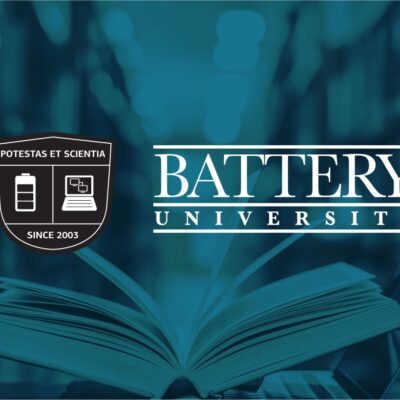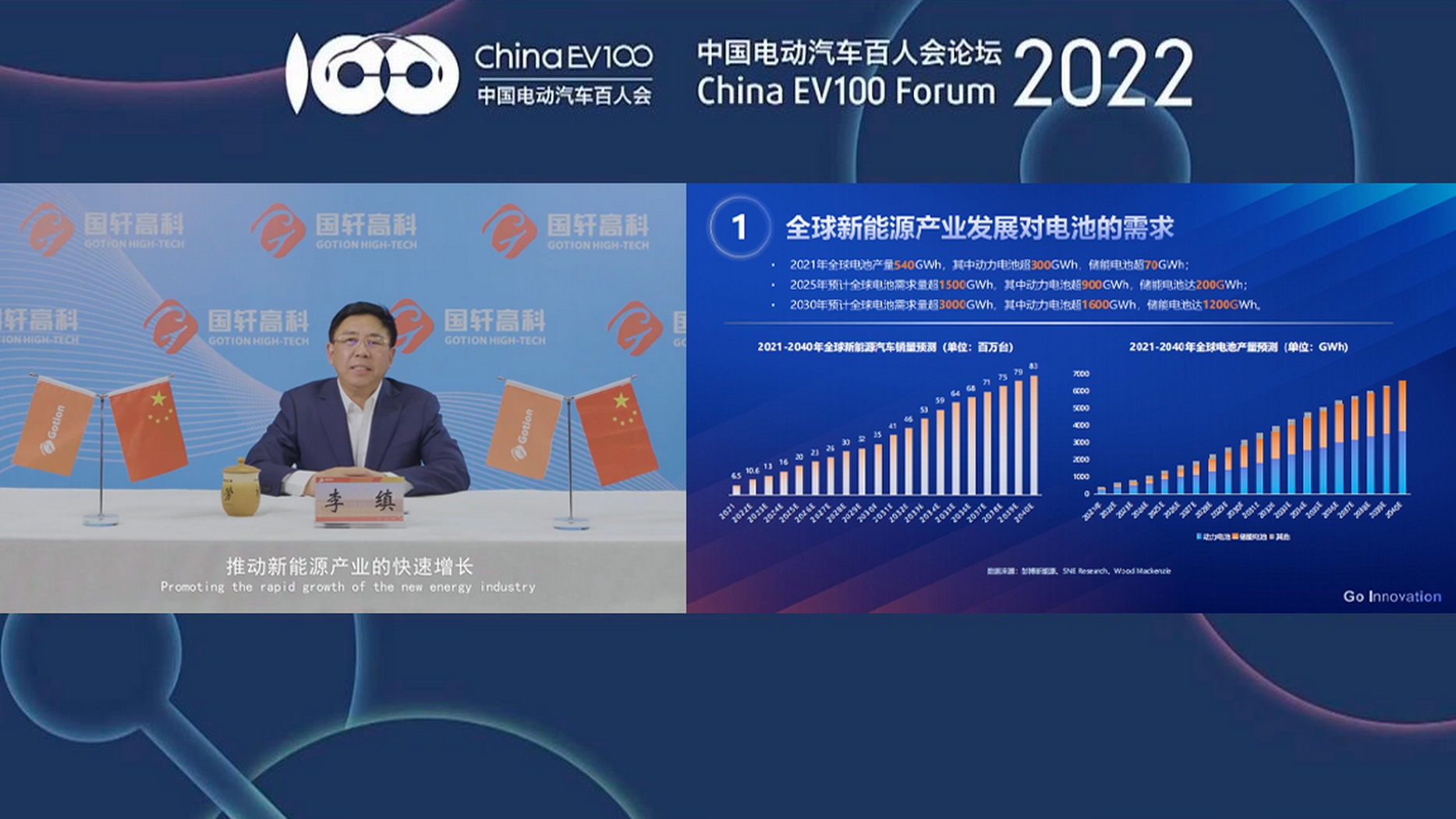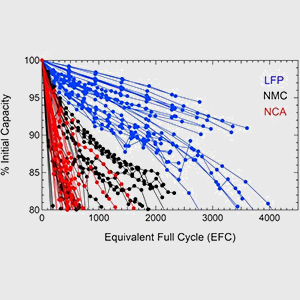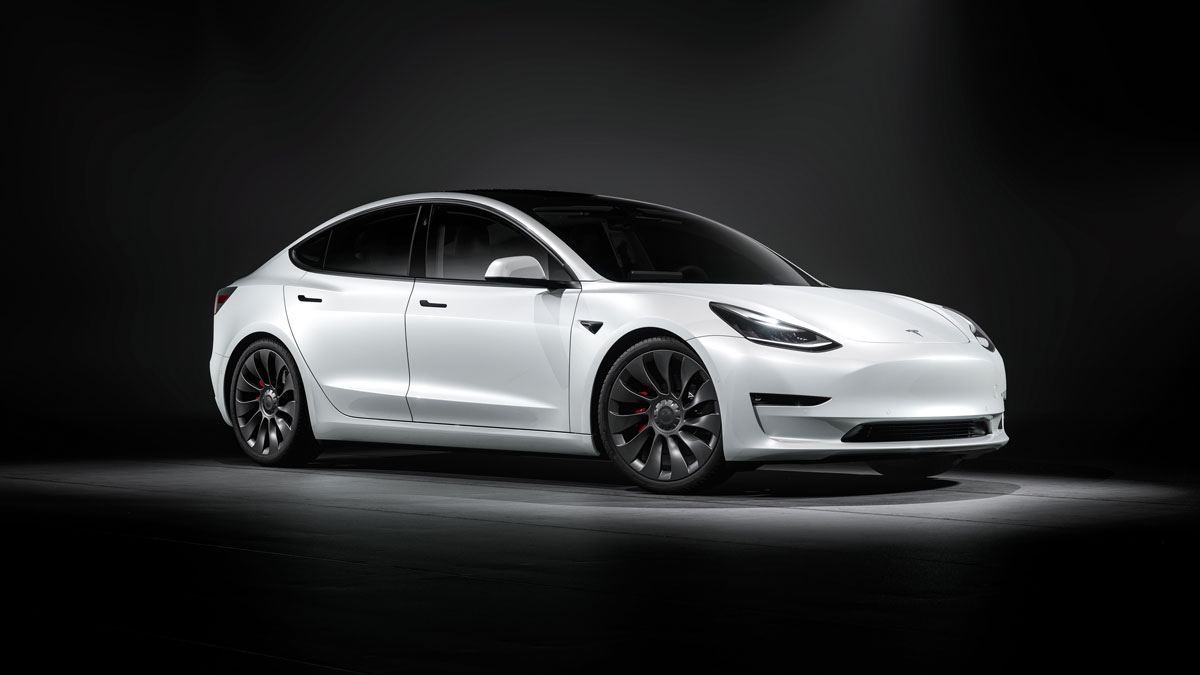To my (limited) knowledge, there aren’t many manufacturers using LFP batteries. Tesla do and MG do, but not on all models. Are there others? Why do we think most manufacturers haven’t moved over to LFP? Isn’t being able to charge to 100%, and leave it at 100%, a good thing for users. I have to admit, that the 80% charge limit thing, passed me by when I was looking to go EV.

scratchyman
LFP batteries?
scratchyman
Discussion starter
2,852 posts
·
Joined 2021
- Add to quote Only show this user
To my (limited) knowledge, there aren’t many manufacturers using LFP batteries. Tesla do and MG do, but not on all models. Are there others? Why do we think most manufacturers haven’t moved over to LFP? Isn’t being able to charge to 100%, and leave it at 100%, a good thing for users. I have to admit, that the 80% charge limit thing, passed me by when I was looking to go EV.
5,928 posts
·
Joined 2016
LFP is not better. The main issue is lower energy density. But it is good enough, and has some advantages that you have listed.
9,614 posts
·
Joined 2013
LFP is far safer as they are almost completely fire resistant. BTW thats not to say i think other batteries are dangerous as there are still hardly any fire issues
1,124 posts
·
Joined 2022
It's more of a chinese budget car thing. Tesla just has perfected it with their own BMS with faster charging etc. which makes it look more viable option.
Obviously it has some trade offs too so that's why not used in every car.
There are advancements already made to this tech like M3P.
There was a similar thread not long ago but can't find it (the search sucks?).
Obviously it has some trade offs too so that's why not used in every car.
There are advancements already made to this tech like M3P.
There was a similar thread not long ago but can't find it (the search sucks?).
8,574 posts
·
Joined 2021
With LFP you get less energy for the same size/weight. This is no problem for static applications such as house batteries but for BEVs you want the highest energy density possible. Even small increases in energy density of a battery chemistry can produce big improvements in packaging, efficiency, and range. However LFP is a huge backward step in these regards.
LFP is typically fitted to base-model or budget BEVs because it is cheaper.
LFP is typically fitted to base-model or budget BEVs because it is cheaper.
6,234 posts
·
Joined 2017
Yep, all this.What exactly are you adding?
Have I said anything incorrect?
Platform architecture is a much bigger influence on efficiency and range from the available volume for batteries.This is no problem for static applications such as house batteries but for BEVs you want the highest energy density possible. Even small increases in energy density of a battery chemistry can produce big improvements in packaging, efficiency, and range. However LFP is a huge backward step in these regards.
The fact many (probably most) people can buy an LFP battery and not notice any difference between that and a non-LFP battery well demonstrates that. It's not even like we're comparing petrol and diesel vehicle characteristics.
754 posts
·
Joined 2018
Useful comparison of the various flavours of Li ion batteries:

 batteryuniversity.com
batteryuniversity.com
A graph at the bottom shows power densities wh/kg.

BU-205: Types of Lithium-ion
Become familiar with the many different types of lithium-ion batteries: Lithium Cobalt Oxide, Lithium Manganese Oxide, Lithium Iron Phosphate and more.
A graph at the bottom shows power densities wh/kg.
9,614 posts
·
Joined 2013
That graph is out of date

 www.autoevolution.com
www.autoevolution.com

LFP Cells Are Getting More Energy Density: 200 Wh/Kg With SVolt, 230 Wh/Kg With Gotion
While SVolt is already selling its LFP cells with 200 Wh/kg, Gotion High-Tech intends to produce its 230-Wh/kg LFP battery by the end of 2022
8,574 posts
·
Joined 2021
What exactly are you adding?Oh, this thread again! LFP is great. More charge cycles, less volatile failure, Cobalt-free. Better recyclability. Compatibility with homes storage solutions.
LFP is like petrol whilst non-LFP is like RDX.
@Stinsy hates LFP. LFP said nasty things. Stinsy sad.
Have I said anything incorrect?
711 posts
·
Joined 2021
BYD and Ora also use LFP. I can't think of any currently available western brands except Tesla that use them, although Fisker will change that.
On the 100% thing remember that what is displayed may differ from the actual state of charge. Manufacturers typically include a top buffer so 100% displayed is really 90 or 95% SoC which will extend battery lifespan.
This creates silly situations like Mercedes fitting 120kwh batteries to the EQS but only using 108kwh. I've in the past guesstimated based on the MG4 that LFP energy density by weight in final packs is only about 15% worse so an NMC with a 15% buffer and LFP pack with no buffer should be about equal in energy density by weight, mercedes use 10% and I think recommend charging to 80% on top of that. They could switch to LFP with little impact.
The main issue then is power density. As far as I know LFP can't discharge quite as hard as NMC. If you want an 800hp supercar NMC will be better able to cope with that. Below 200hp I think LFP would be a good fit for the majority of cars.
On the 100% thing remember that what is displayed may differ from the actual state of charge. Manufacturers typically include a top buffer so 100% displayed is really 90 or 95% SoC which will extend battery lifespan.
This creates silly situations like Mercedes fitting 120kwh batteries to the EQS but only using 108kwh. I've in the past guesstimated based on the MG4 that LFP energy density by weight in final packs is only about 15% worse so an NMC with a 15% buffer and LFP pack with no buffer should be about equal in energy density by weight, mercedes use 10% and I think recommend charging to 80% on top of that. They could switch to LFP with little impact.
The main issue then is power density. As far as I know LFP can't discharge quite as hard as NMC. If you want an 800hp supercar NMC will be better able to cope with that. Below 200hp I think LFP would be a good fit for the majority of cars.
231 posts
·
Joined 2017
The smaller battery Volvo EX30 uses them.BYD and Ora also use LFP. I can't think of any currently available western brands except Tesla that use them, although Fisker will change that.
1,191 posts
·
Joined 2023
Safer, more resilient and cheaper with lower power density and lower discharge rate. Most cars don't need NMC.
I'd say MG has the right idea. A LR using NMC and a standard range using cheaper LFP.
As I understand it the Chinese manufacturers own the patents for LFP but they are expiring soon so I expect things will move on once lots of people can potentially make money on upgrades to the chemistry.
I'd say MG has the right idea. A LR using NMC and a standard range using cheaper LFP.
As I understand it the Chinese manufacturers own the patents for LFP but they are expiring soon so I expect things will move on once lots of people can potentially make money on upgrades to the chemistry.
8,574 posts
·
Joined 2021
I thought LFP was invented at Texas University. Maybe Chinese companies have patients on technology related to mass production thereof?
6,234 posts
·
Joined 2017
It is if they intend to export. Which is why the Chinese aerospace industry has been much slower than other industries, because no one will buy a jet that will be impounded in Europe/North America.
3,152 posts
·
Joined 2018
Legacy automakers went to established names for their initial battery supply so the likes of Samsung, LG Chem, Panasonic were only offering NMC and the benchmark at the time was Tesla's NMC batteries.
As more dedicated EV battery manufacturing starts to happen then no doubt more LFP batteries will appear in more car models.
As more dedicated EV battery manufacturing starts to happen then no doubt more LFP batteries will appear in more car models.
6,234 posts
·
Joined 2017
Not to mention many would have signed into multi-year contracts with those suppliers, they don't have the agility to change like more integrated supply chains in Tesla and China.Legacy automakers went to established names for their initial battery supply so the likes of Samsung, LG Chem, Panasonic were only offering NMC and the benchmark at the time was Tesla's NMC batteries.
As more dedicated EV battery manufacturing starts to happen then no doubt more LFP batteries will appear in more car models.
16,298 posts
·
Joined 2014
"Better" depends on the metrics. LFP has lower energy density but it has also has lower cost and higher cycle life. NMC has higher density, sometimes higher discharge rates but higher costs and lower cycle life.LFP is not better. The main issue is lower energy density.
The M3 RWD LFP now has a 60kWh pack and 305 WLTP miles. The LiIon RWD LR car has 82kWh at an extra £4,000. For that you get 80 more WLTP miles and a slightly faster 0-60 time.
To preserve battery life, Tesla recomend charging the LiIon pack to 80%. Most of the time you won't see that extra "80" miles.
LFP batteries have a higher cycle life then NMC LiIon. Degredation in an LFP car is mostly due to age, not how far it has been driven or the number of times it has been charged to 100%.
They have production investments or contracts for LiIon. Design cycles take years.Why do we think most manufacturers haven’t moved over to LFP?
Some cars may not be a good match for the lower energy density of LFP batteries. A small skateboard or a dual ICE/BEV platform might not have enough room. An LFP Peugeot e208 might be uncompettive on range.
I wouldn't be too surprised to see LFP batteries in brandmate Polestar.The smaller battery Volvo EX30 uses them.
Sources:

New Tests Prove: LFP Lithium Batteries Live Longer than NMC - OneCharge
Recent independent degradation tests of commercial lithium batteries prove - LFP chemistry is safer and has a longer life-span than NMC.

Tesla adds 10 per cent range, larger battery to Model 3. No change in price
Tesla is adding a larger battery to its Model 3 electric sedan, increasing the driving range by almost 10 per cent.
7,498 posts
·
Joined 2020
Tesla says that the battery is good for 1500+ recharge cycles before goes down to 70%. On 250 miles per charge you are looking at 375 000 miles. So for the average driver and the time of owning a car, how many in the UK will hit this?"Better" depends on the metrics. LFP has lower energy density but it has also has lower cost and higher cycle life.
In the US there are many Tesla's with over 300K miles and still going strong and every single one of the them is with non LFP battery.
1,191 posts
·
Joined 2023
Might find the floor price of lfp cars at scrap time is better if the battery is in better condition for either reuse in another car or more likely grid storage. Maybe they'll be the preferred chemistry if we ever get a smart grid and vehicle to grid becomes common.
2,084 posts
·
Joined 2022
The big unknown here is calendar life, not just cycle life; batteries degrade just sitting there doing nothing, even at normal UK temperatures... will 15 year old packs still be OK even if they haven't done many miles? LFP might be better for that, too, but it is much harder to know in advance when the chemistry/cells are rapidly evolving.
1,191 posts
·
Joined 2023
Good point. I'll need to have a read around and see if there is any information on the domestic Chinese batteries that may have been around a bit longer.
1,124 posts
·
Joined 2022
Current practical limit seems around 50-60kWh and you mostly find them in budget cars. Performance is also another factor, it's lower with LFP so NMC suits better gor faster cars.
You also need to charge full more often to keep BMS happy. I find that a slight disadvantage but it's a minor thing. Wouldn't keep from getting one.
Seems so far only Tesla can utilize better charge speeds, BYD have relatively modest charge speeds in comparison with same batteries...
You also need to charge full more often to keep BMS happy. I find that a slight disadvantage but it's a minor thing. Wouldn't keep from getting one.
Seems so far only Tesla can utilize better charge speeds, BYD have relatively modest charge speeds in comparison with same batteries...
528 posts
·
Joined 2021
Std range Mustang also switched to LFP recently. BYD doing lots of deals with manufacturers, so we may see many more soon.
9,180 posts
·
Joined 2021
Have been having a look around on the net as of course there is an awful lot of guff about who “makesl batteries. Mercedes say they make their batteries and it is one of the selling points of the EQE SUV that the battery uses less cobalt for example - obviously someone in the marketing Dept twigged cobalt is a trigger word for reasons not to get an EV - but it got me thinking who actually does make their own batteries and the answer seems to be no one until this year when Tesla started their own production of 4680 cells. And it seems they are currently destined for the model Y and cyberteuck not the model 3 yet.
So everyone including Tesla were and indeed are buying their battery cells from the main players who were the Japanese and Koreans but are more and more the Chinese so the list incs Panasonic LG chem and CATL amongst many others.
Many manufacturers then assemble the cells into packs and use their own BMS so again we find Tesla are not that different until they decided as late as 2022 to make their own cells but they spin they put on things make them seem so.
Which technology a manufacturer goes for will no doubt be a decision taken on engineering as well as cost grounds. At the moment for example Mercedes may feel they can absorb the higher cost of NMC for the benefits it gives v the disadvantages such as cost. In the longer term Mercedes are going to have to address the weight issue of their cars as here in France for example this will disadvantage them if competitors can deliver a similar luxury vehicle at a much lighter weight, even if competitors cannot I will not pay 8,000 euros tax just for the weight penalty!
There is loads of stuff out there this article covers some of the basics
 www.ft.com
www.ft.com
So everyone including Tesla were and indeed are buying their battery cells from the main players who were the Japanese and Koreans but are more and more the Chinese so the list incs Panasonic LG chem and CATL amongst many others.
Many manufacturers then assemble the cells into packs and use their own BMS so again we find Tesla are not that different until they decided as late as 2022 to make their own cells but they spin they put on things make them seem so.
Which technology a manufacturer goes for will no doubt be a decision taken on engineering as well as cost grounds. At the moment for example Mercedes may feel they can absorb the higher cost of NMC for the benefits it gives v the disadvantages such as cost. In the longer term Mercedes are going to have to address the weight issue of their cars as here in France for example this will disadvantage them if competitors can deliver a similar luxury vehicle at a much lighter weight, even if competitors cannot I will not pay 8,000 euros tax just for the weight penalty!
There is loads of stuff out there this article covers some of the basics
Tesla is disrupting the car battery industry | Financial Times
Electric vehicle maker is ramping up production in the US and challenging the dominant battery makers in Asia
 www.ft.com
www.ft.com
9,614 posts
·
Joined 2013
The benefit Tesla has is simply the quantity that they can buy giving them better discounts..... There is a reason that the Chinese are building a battery plant almost next door to Tesla factoryHave been having a look around on the net as of course there is an awful lot of guff about who “makesl batteries. Mercedes say they make their batteries and it is one of the selling points of the EQE SUV that the battery uses less cobalt for example - obviously someone in the marketing Dept twigged cobalt is a trigger word for reasons not to get an EV - but it got me thinking who actually does make their own batteries and the answer seems to be no one until this year when Tesla started their own production of 4680 cells. And it seems they are currently destined for the model Y and cyberteuck not the model 3 yet.
So everyone including Tesla were and indeed are buying their battery cells from the main players who were the Japanese and Koreans but are more and more the Chinese so the list incs Panasonic LG chem and CATL amongst many others.
Many manufacturers then assemble the cells into packs and use their own BMS so again we find Tesla are not that different until they decided as late as 2022 to make their own cells but they spin they put on things make them seem so.
Which technology a manufacturer goes for will no doubt be a decision taken on engineering as well as cost grounds. At the moment for example Mercedes may feel they can absorb the higher cost of NMC for the benefits it gives v the disadvantages such as cost. In the longer term Mercedes are going to have to address the weight issue of their cars as here in France for example this will disadvantage them if competitors can deliver a similar luxury vehicle at a much lighter weight, even if competitors cannot I will not pay 8,000 euros tax just for the weight penalty!
There is loads of stuff out there this article covers some of the basics
Tesla is disrupting the car battery industry | Financial Times
Electric vehicle maker is ramping up production in the US and challenging the dominant battery makers in Asiawww.ft.com
7,498 posts
·
Joined 2020
About 2 months ago Tesla signed a deal with BYD for I believe it was 800 000 battery a year for the next 5 years. They don't hide the fact that are using someone else battery. The deal is for LFP battery so I assume they will show in all M3 cars in a near future. 4680 will be made and used in Texas. I read an article today that by the end of the next year they will have 60 000 (yes 60) employee in Texas and will become the second biggest employer in the state of Tx.So everyone including Tesla were and indeed are buying their battery cells from the main players
9,180 posts
·
Joined 2021
But unless I misread the thread there is a lot of misunderstanding about Tesla batteries being made by Tesla😉
And Mercedes are just as bad they say they use batteries built by them in their factories which they are but the cells are not made by Mercedes and that is the little detail that actually is important. Who makes the cells is the one who has the control over the supply chain……..
And Mercedes are just as bad they say they use batteries built by them in their factories which they are but the cells are not made by Mercedes and that is the little detail that actually is important. Who makes the cells is the one who has the control over the supply chain……..
16,298 posts
·
Joined 2014
The LFP cells in the current RWD M3 are made by CATL.
The 2170 cells used in the long range cars built at Fremont come from Giga Nevada. That plant is a joint venture between Tesla and Panasonic.
The 2170 cells used in the long range cars built at Fremont come from Giga Nevada. That plant is a joint venture between Tesla and Panasonic.
1,124 posts
·
Joined 2022
TSMC can make certain type chips more efficiently. That's why big companies use them rather than make their own.AMD found that out with Global foundries and even Apple (world richest company) have backtracked on opening it's own fabs and sticking with TSMC.
3,152 posts
·
Joined 2018
It's the relentless pace and cost which makes them the biggest player in the market. The only other company to keep up is Samsung.
6,470 posts
·
Joined 2022
Does anyone know what chemistry Stellantis use? I know they buy from CATL, but my Google Fu is weak and I can't find any more details. At work, there's lots of FUD, which our Fleet team try valiantly to combat, and usually correctly. In a recent argument about fire, they said there was no fire risk as Vauxhall use LFP batteries. Do they though? I'm not concerned about fire, but I'd like to know if charging to 100% harms the battery or not. Perhaps it is LFP, which likes 100%, and that's why Stellantis lets you set a scheduled charge start time, but not stop?
9,180 posts
·
Joined 2021
I found this for you sorry it is in French but you should be able to translate bits via google as you go along. It seems they are Lithium-ion with no clarification of the type of chemistry but as LFP are referred to as such I take it currently Stelliantos are not using them but I would have thought they may look to do so if the benefits outweigh the disadvantages.
 www.opel.fr
I understand LFP were around ages ago but were not used due to their disadvantage of lack of power density. As with everything there are compromises to be made but maybe now with better infrastructures for charging the idea that the advantages of LFP outweigh the disadvantage may change and it seems to me for smaller cars intended for city use and not regular long distance they would be a good choice but I am not an automotive engineer designing cars for large but differing markets in the constraints of needing to return a profit!
www.opel.fr
I understand LFP were around ages ago but were not used due to their disadvantage of lack of power density. As with everything there are compromises to be made but maybe now with better infrastructures for charging the idea that the advantages of LFP outweigh the disadvantage may change and it seems to me for smaller cars intended for city use and not regular long distance they would be a good choice but I am not an automotive engineer designing cars for large but differing markets in the constraints of needing to return a profit!
What did amuse me was the statement the battery can be swapped in less than 5 mins!!
Electric car batteries | maintenance, warranty and sustainability | <market>
Lithium-ion batteries are used in current electric cars. Learn more about the warranty period, maintenance & sustainability aspects.
What did amuse me was the statement the battery can be swapped in less than 5 mins!!
7,498 posts
·
Joined 2020
Following the post of @andrew*debbie I have to say that I will be very interested to see the upcoming Renault 5.... OK, now I am just showing my age 😂. In my younger years this was THE car to be seen driving, way before MK1 VW Golf GTI made his mark.
7,389 posts
·
Joined 2017
I had a Renault 5 GTL around 1990 - it rolled horrifically - one time I was on the long downhill left-hander on the M90 heading to Perth (at about 85mph...) and was absolutely pooping myself the car might roll!
I slowed down of course 😄
The R5 Gordini was a beaut for it's time - I seem to recall quite mad multivaned alloys on it - didn't that morph into the GT Turbo?
I slowed down of course 😄
The R5 Gordini was a beaut for it's time - I seem to recall quite mad multivaned alloys on it - didn't that morph into the GT Turbo?
7,498 posts
·
Joined 2020
This actually make a lot of sense, perhaps this is the reason why Tesla recommend that you plug every night for the cars with LFP batteries regardless of what SoC is showing.I guess LFP packs have extremely slow balancing so need to be left at high SoC so that the balancers can do their job.
16,298 posts
·
Joined 2014
What I've read:This actually make a lot of sense, perhaps this is the reason why Tesla recommend that you plug every night for the cars with LFP batteries regardless of what SoC is showing.
Their BMS is not able to reliably know the SOC unless the pack is charged to 100% at least once a week. The car enters a "calibration" phase when the battery is around 99%. The first time I chaged my car to 100%, it was in calibration for about 30 minutes.
Posters in Tesla forums who might know what they are talking about say calibration is not balancing. I'm not entirely convinced. It is possible an unbalanced pack causes an early low voltage cut off.
1,001 posts
·
Joined 2021
They had a big buffer didn't they, something like 55kWh gross so should last for a very long time.I can't see VW's 45 kWh iD.3s being an attractive proposition - are they selling any/many?
7,498 posts
·
Joined 2020
Spring chicken 😂 I am talking 1980 here. This was the first time I drove one. Still remember it till this day. It was this gold kind of colour but looked amazing in the eye of a 18 years old 😂😂 It wasn't my car obviously but I drove it from Milano, to Genoa and I was smiling all the way...every one of the 150 kmI had a Renault 5 GTL around 1990 -
-
?
-
?
-
?
-
?
-
?
-
?
-
?
-
?
-
?
-
?
-
?
-
?
-
?
-
?
-
?
-
?
-
?
-
?
-
?
-
?
- posts
- 2M
- members
- 78K
- Since
- 2011
A community for enthusiasts of all makes and models of EV from BMW to Tesla, Renault, Nissan, Mitsubishi and more. Join the electrifying discussion today!



